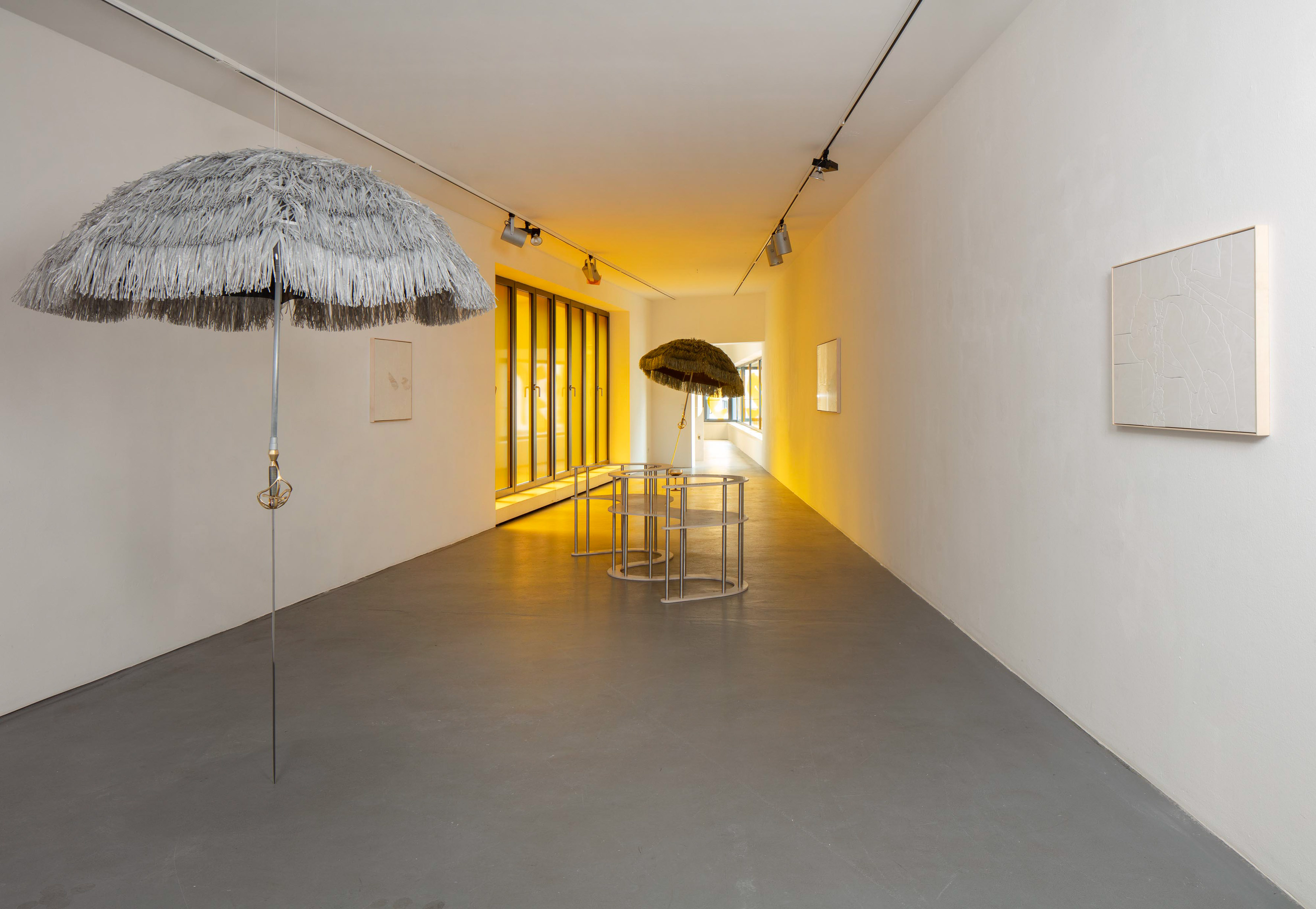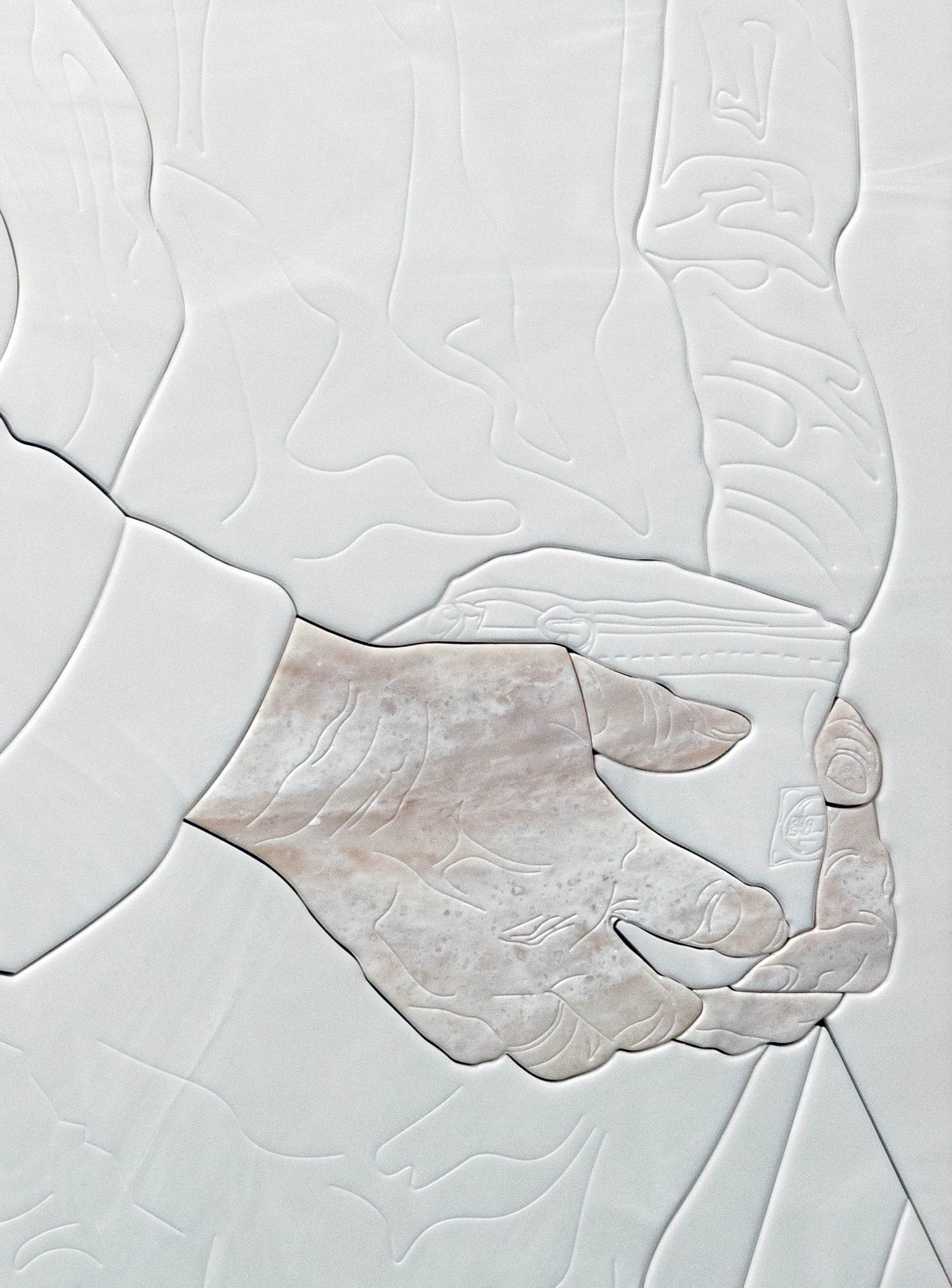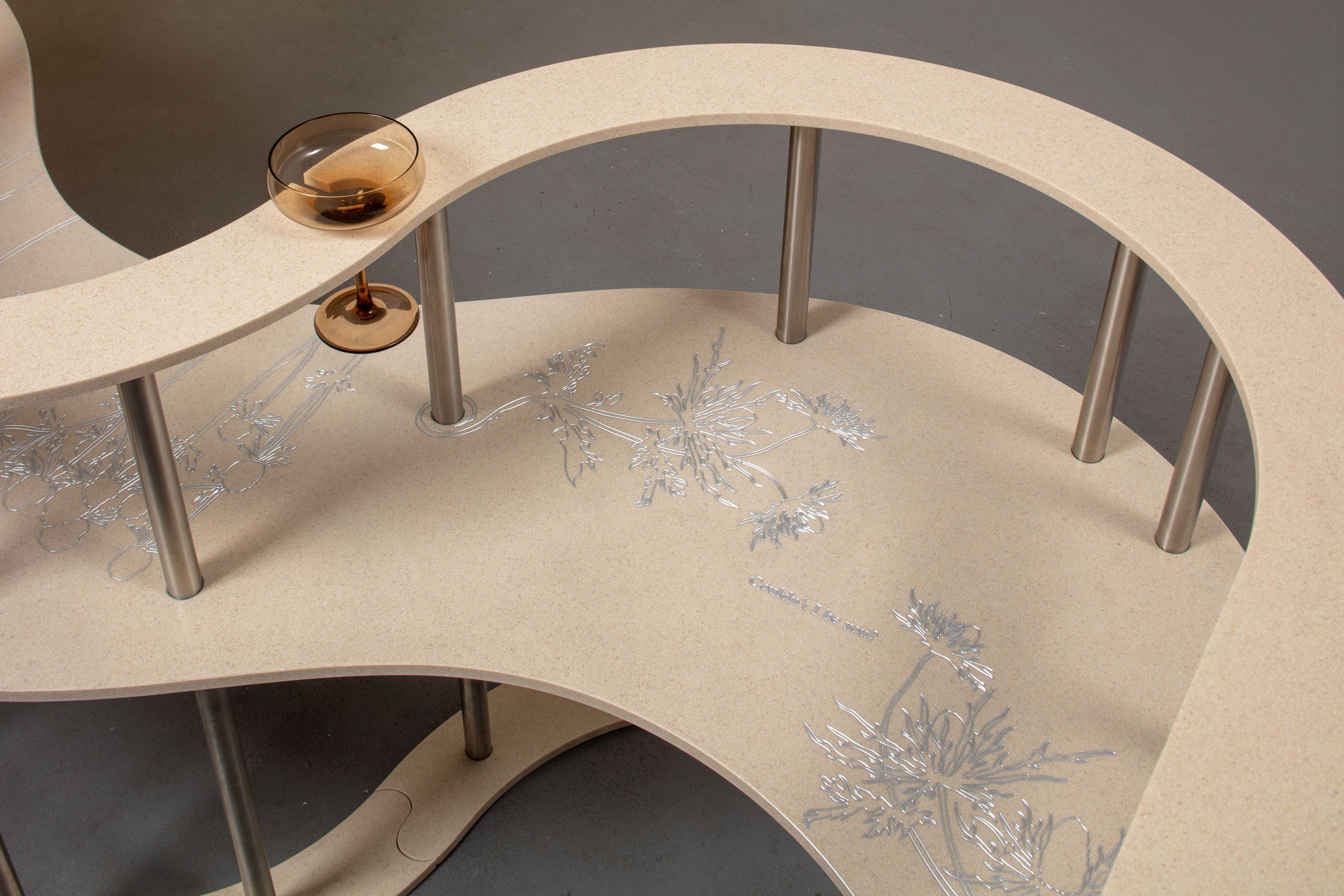YYYYMMDD >>> BACK HOME <<< >>> SELECTED FEATURES <<< >>> HIDDEN ARCHIVE <<<
[20231005]
SOFT CRUELTIES by LENA MARIE EMRICH at KUNSTVEREIN AM ROSA-LUXEMBURG-PLATZ curated by SUSANNE PRINZ [from 20230916 to 20231111]
[Photos: Ludger Paffrath]




















THE PRESENCE OF ABSENCE
The corposphere, according to José Enrique Finol, reads as a dialectic apparatus that operates between the absence and the presence of the human body. It is set into motion partly through, and partly parallel to, a semiotic device called ellipse. An ellipse points to a missing, or not completely revealed section of a sentence; as in “She took a picture of me, and I of her”, where the last part of the sentence is a stand-in for “and I took a picture of her”. Its presence points back to an absence.
As this is a fundamental part of how we understand meaning through context, it is no surprise that this mechanism is prolific also in our visual culture. And since our shared visual culture contains abundant representation of the human body, it seems only pertinent to engage with that absence, understood through the objects made for interacting with said body.
In the beginning there was nothing, reads the opening of one famous book. But this is not biblical times, so for us that is impossible. We can not claim nothingness, but rather lay our claim to the act of removing something that already exists. And this thinking brings us close to some large questions: Do you make something to later remove it, or are you pointing to something that was already absent? And if it was absent, who then removed it? And who first noticed the presence of that absence?
In early 2022 Lena Marie Emrich did the stage design and costumes for “A girl's story” at Schaubühne, Berlin, a monologic play derived from Annie Ernauxs book by the same name. During the play, one could experience a moment where the actress playing Annie reduced herself to nothing but a voice in the room, her body appearing inconsequential and absent. The effect was a reduction of the stage to a dark plane with only a handful of objects and a whispered sound. As Annie gradually came back into full bodily force the objects around her became more and more animated and found their function in the interplay with Annies human embodiment. Then it was abrupt, cruel even, as a large paravent became a tiny plaything and tables and seats became jumping-off points. As some of the objects on stage where covered in bruise marks, it became apparent that their raison d’être was intricately linked to the body present.
The objects on stage did only peripherally relate to the viewers gaze, but a relation nonetheless, and this functions as a segue into the works on display at Lena Marie Emrichs exhibition at Kunstverein Rosa Luxemburg Platz.
Objects in an exhibition are not normally playthings, they are meant to be viewed and understood at a distance. And in Soft cruelties it is no different. But what is brought forth here is not only the representational absence of a body (there is that too), but simultaneously a hollowed out space for the viewer to inhabit, both actual and imaginary. In the work Menage a trois (Garden Eden) there are both, an actual space for the viewer to inhabit and a space for imaginative projection.
While in The plunge one encounters an object fused from a beach-umbrella and a sword, where the pole turns into a pronounced cross-guard and then a blade. The reading of this work hinges not so much on the combining of two dissimilar objects, but gathers its meaning by pointing to what is clearly missing from both objects; a body. An umbrella becomes a simulacrum for a shield when placed next to a sword, and both objects, simulacrum or not, points back to its main function, namely to protect the human body, from nature and from other human bodies.
A similar dichotomy is found in Hugging raincoats where two bodies wrapped in rain-ponchos are standing close to each other. One can gather from the image and from the camera-angle that they are in a public space, where the protection the ponchos provide is equally against other bodies, as it is against rain. An image of a gigant prophylactic comes to mind.
When concerning oneself with the body, the question of control and power is undoubtedly a large part of that concern. It is as if by pointing to the body, and asking what"s is missing, what dictates its meaning, the answer is more often than not; control. There are two works in the exhibition that examines these concerns more directly; Phallocentric Keychain and In Limbo.
In Phallocentric Keychain a female hand is shown holding, or dangling, a keychain with a number of miniatures of iconic buildings, the Eiffel, the Chrysler, the Pisa, the kind one might pick up in an airport souvenir shop. It is only possible to read these as symbols of phallocentric projection, iconically phallocentric even. But in this image they are firmly under female control, hung, dangling and made into miniatures.
In In Limbo woman is dancing the limbo, the act of attempting to pass under a bar that is subsequently lowered for each pass. The reading of this work relies on understanding the degree of body-control it requires, but understood as self-control, not imposed by any outside person or entity. Control over the body shares a lot of DNA with the safety of the body, and Deserted landscape and fight or flight makes this overlap clear. In Deserted landscape one encounters an empty area with four car wrecks at various distances from the viewer, it is a specific model of a FIAT 500 car, small and boxlike and in its current wrecked state it seems to associate a coffin. It also conjures images of crash-test-dummies, a replica of the human body, set on an endless symbolic death cycle, so that we, in our bodies, can feel a sense of security. For those of us old enough to remember being able to happily bounce around in the backseat of cars in the 70s and 80s, this image brings about a mild sense of terror. Which is further enhanced in fight or flight where a closeup of an airplane seatbelt is pictured, but one that looks skewed and unsafe, further pronounced by the commanding inscription on the buckle; lift.
It is near impossible, when thinking about the human body, to sidestep the symbolic order that governs, not only our physical selves, but our behaviour and degree of self-control. Ironically, our projected self-image, more widespread and fantastical then ever before, does not always fall under the governing forces of this order. But finds its potency in the margins and the fringes of this system. That what lies between what is said and what is shown, provides a fertile ground to discuss what is actually missing.
In the last written work by Vladimir Nabokov, The Original of Laura, not so much a complete narrative as a puzzle-piece of sentences and fragments, one encounters a protagonist set on a path of auto-destruction, where he attempts to gradually remove parts of his body with the aim of complete dissolution.
The brain, the body and language is forcefully brought together in the two very last paragraphs of the book, entirely written on index cards as a fragmented and semi-narrative tale:
“Thinking away oneself
a melting sensation
an envahissement of delicious dissolution (what a miraculously appropriate noun!)”
By making the connection to the symbolic order of language, Nabokov gifts us not only his actual aim; the evisceration of symbolic order, but also the semiotic tools needed, as he ends the book on the last card; handwritten and just barely visible:
“efface
expunge
erase
delete
rub out
wipe out
obliterate”
[Text: Oystein Aasan] [The exhibition is supported by HIMACS]
©YYYYMMDD All content and design by Daniela Grabosch + Ricardo Almeida Roque unless otherwise stated. Images, Videos and Texts can only be used under permission of the author(s).